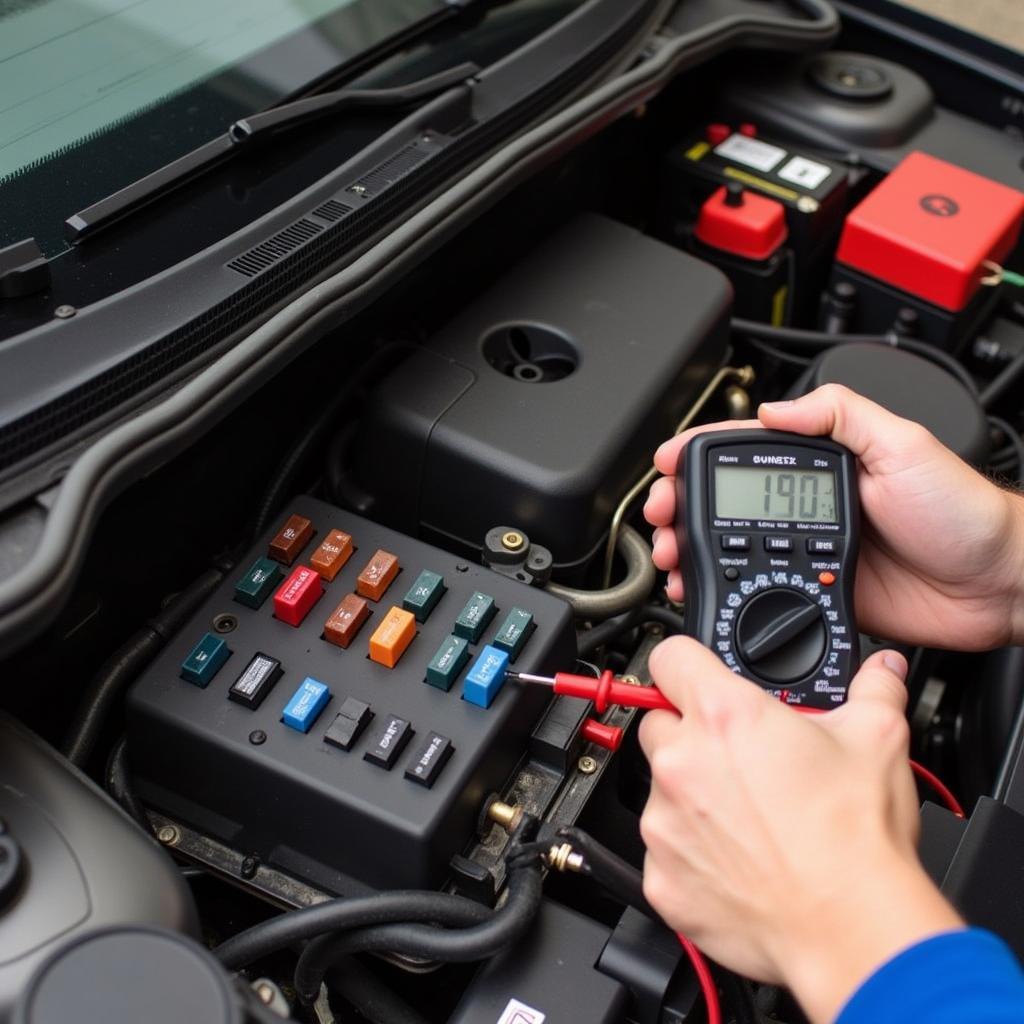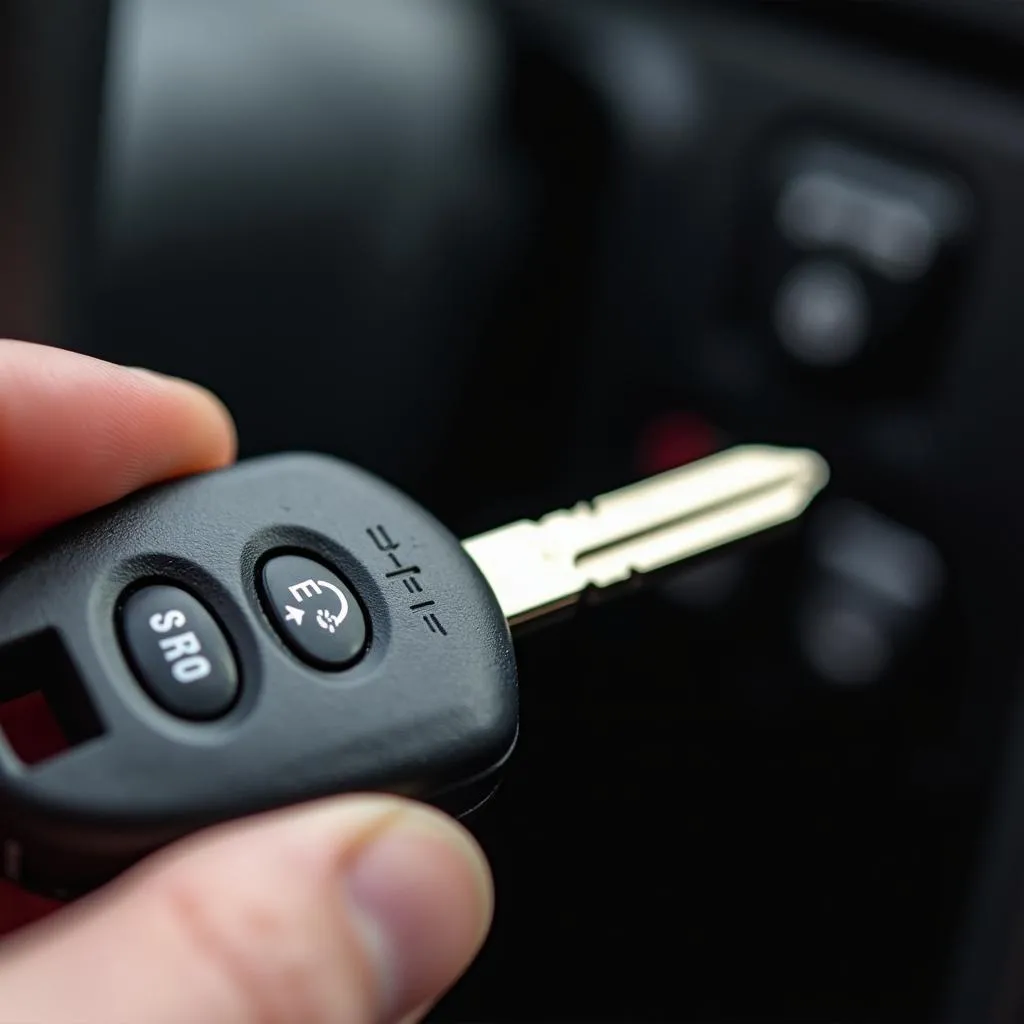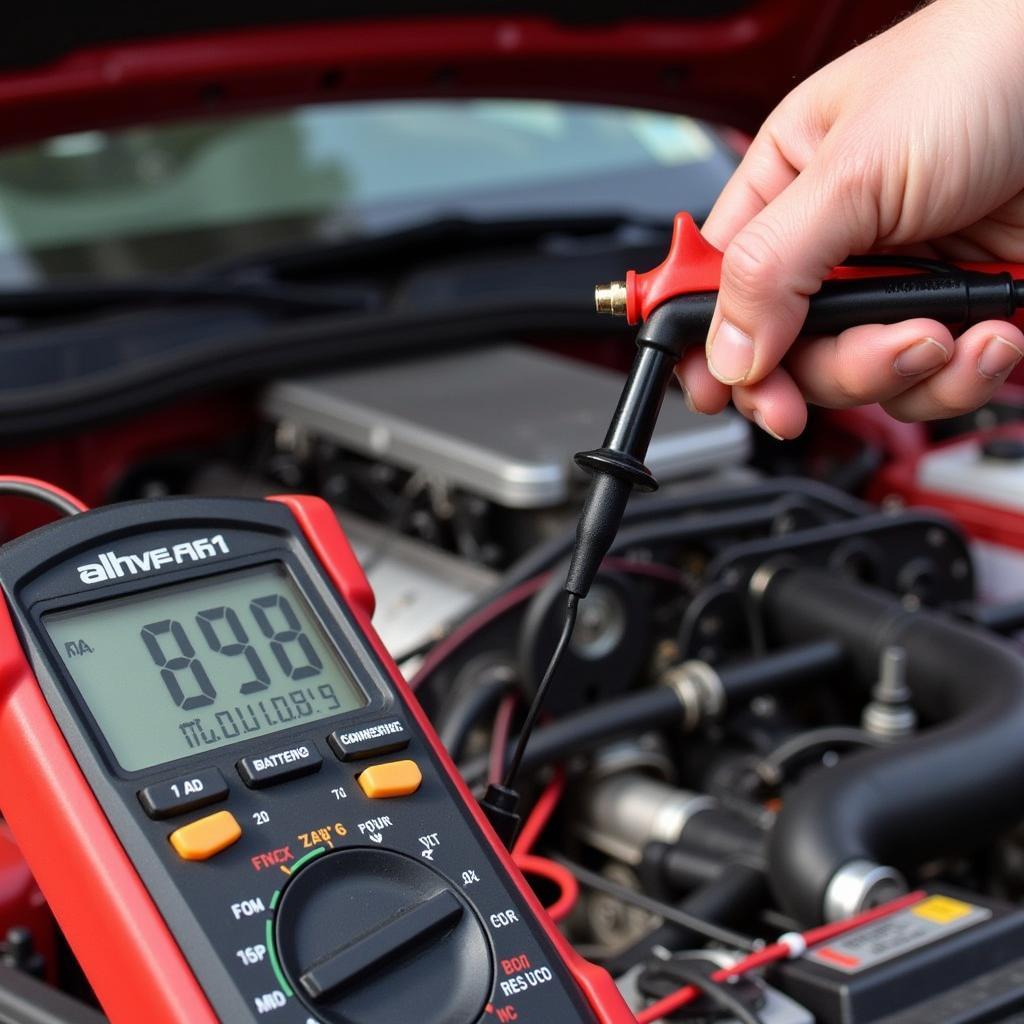Finding a battery drain on your car can be frustrating, especially when you’re in a hurry. This guide will walk you through the process of diagnosing and fixing parasitic draws, helping you get back on the road quickly and confidently. We’ll cover everything from simple checks to more advanced diagnostic techniques, empowering you to tackle this common car problem. 1992 lincoln town car radio wiring harness
Why is My Car Battery Dying? Understanding Battery Drain
A car battery drain, also known as a parasitic draw, occurs when something in your vehicle’s electrical system continues to consume power even after the ignition is turned off. This can lead to a dead battery, leaving you stranded and needing a jump start. Several culprits can cause this, ranging from faulty interior lights to more complex issues with modules or aftermarket accessories. Identifying the source is key to resolving the problem.
Common Causes of Car Battery Drain
Some of the most common causes of a car battery drain are simple and easy to fix. These include:
- Interior Lights: A dome light, glove box light, or trunk light left on can drain your battery overnight.
- Faulty Door Switches: If a door switch malfunctions, the car’s computer might think the door is open, keeping certain systems active and draining the battery.
- Aftermarket Accessories: Improperly installed car alarms, stereos, or other accessories can be a significant source of parasitic draw.
- Faulty Alternator: While less common as a direct cause of a drain, a failing alternator won’t recharge the battery properly, making it seem like there’s a constant drain.
How to Find a Battery Drain on Your Car: A Step-by-Step Guide
Finding the source of a battery drain requires a systematic approach. Here’s a step-by-step guide:
- Gather your tools: You’ll need a multimeter, preferably a digital one with a milliamp setting, and some patience.
- Prepare the vehicle: Turn off all lights, accessories, and the ignition. Close all doors and ensure the car is in a quiet environment to minimize electrical interference.
- Disconnect the negative battery cable: This isolates the battery from the vehicle’s electrical system.
- Connect the multimeter: Set your multimeter to the DC amps setting. Connect the red lead to the negative battery terminal and the black lead to the disconnected negative battery cable. 1993 lincoln town car radio wiring harness
- Observe the reading: A small current draw (around 50 milliamps) is normal. Anything significantly higher indicates a parasitic draw.
- Isolate the circuits: Begin pulling fuses one by one, observing the multimeter reading after each fuse removal. When the current draw drops significantly, you’ve identified the circuit with the problem.
Using Advanced Diagnostic Techniques
If the fuse test doesn’t pinpoint the issue, more advanced diagnostics may be required. These can include using a scan tool to check for fault codes related to specific modules or using a thermal imaging camera to identify hot spots in the wiring harness, indicating excessive current flow. 1996 lincoln town car radio wiring diagram
 Checking Fuses for Battery Drain
Checking Fuses for Battery Drain
Preventing Future Battery Drains
Prevention is always better than cure. Here are some tips to avoid future battery drains:
- Regularly check your battery and alternator: Ensure they are in good working condition.
- Be mindful of aftermarket installations: Ensure any aftermarket accessories are installed correctly by a qualified professional. car radio wiring harness kit
- Double-check interior lights: Make it a habit to verify that all lights are off before exiting your vehicle.
Expert Insights
“A common mistake people make is assuming a dead battery is always the battery’s fault. Parasitic draws are often the culprit, and they can be surprisingly easy to track down with a systematic approach.” – David Miller, Automotive Electrical Engineer
“Investing in a good quality multimeter can save you a lot of headaches down the road. It’s an essential tool for any DIY car enthusiast.” – Sarah Johnson, Certified Automotive Technician
Conclusion
Finding a battery drain on your car might seem daunting, but by following the steps outlined in this guide, you can identify and fix the problem effectively. Remember to be systematic, patient, and if you’re unsure about anything, consulting a qualified mechanic is always a good idea. Finding a battery drain early can prevent further issues and keep your car running smoothly. lincoln town car radio wiring diagram
FAQ
-
How long does it take for a parasitic draw to drain a car battery? It depends on the severity of the draw, but it can range from a few hours to a couple of days.
-
Can a bad alternator cause a battery drain? While a bad alternator won’t directly cause a drain, it will prevent the battery from recharging, leading to a dead battery.
-
What is a normal parasitic draw reading? A reading of around 50 milliamps is generally considered normal.
-
What tools do I need to find a battery drain? A digital multimeter is the primary tool needed.
-
What should I do if I can’t find the source of the drain? If you’ve exhausted all troubleshooting steps, it’s best to consult a qualified mechanic.
-
Can extreme temperatures affect battery life? Yes, both extreme heat and cold can shorten a battery’s lifespan.
-
How often should I check my car battery? It’s recommended to check your battery and charging system at least twice a year.



